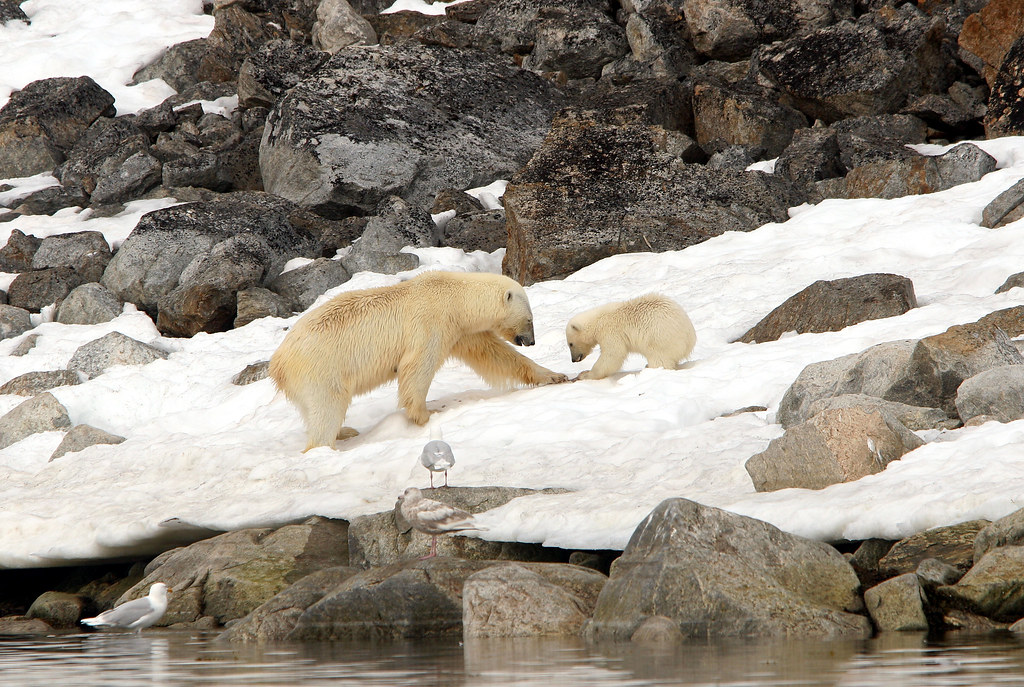July 14, 2007
All Aboard for Svalbard
Just 600 miles from the North Pole lies the island group of Svalbard, of which Spitsbergen is the largest. Variously occupied and exploited by the Dutch, Russians and Norwegians, in 1920 it was decided by treaty that the Norwegians should administer it and the capitol, Longyearbyen, flies the Norwegian tricolour.
The archipelago, named and first mapped by the famous Dutch explorer, Willem Barents, in 1596 became a whaling station, a coal mining centre, a launching point for famous arctic expeditions and more recently, a mecca for naturalists, polar researchers and eco-tourists. Despite Svalbard’s extreme northerly location, the warm North Atlantic current keeps the surrounding seas ice-free almost year round. Temperatures average -16oC in winter and 6oC in summer. 200mm of precipitation is a normal year.
During the so-called heroic age of polar exploration, men set forth into the extremities of the earth in search of all sorts of things, not the least of which was fame, glory and national pride. Spitsbergen, because of its high latitude, was an ideal point for ‘jumping off’ into the Arctic in search of the North Pole.
In 1897, the Swedish scientist and intrepid balloonist, Salomon August Andrée, launched himself and two co-pilots on a journey to the North Pole from Danes Island and were never seen again. Well, not alive anyway. Their bodies, remnants of their balloon and a camera were accidentally found thirty years later on White Island in the far east of Svalbard. Andrée’s balloon crashed and the survivors had made it back to White Island before dying from Vitamin A poisoning (trichinosis) thanks to eating polar bear liver.
Balloons were back on Spitsbergen in 1926 with the Italian, Umberto Nobile, along with Roald Amundsen and rich American Lincoln Ellsworth. Their voyage over the pole in the airship Norge (Norway), is the first creditable expedition to the North Pole even though many would argue that Cmdr Richard Byrd, who took off and landed in a nearby paddock a couple of days prior with his Fokker Tri-Motor, Josephine Ford, was the first. That is - if you discount both Peary and Cook!
Nobile, wounded by the fame wrested from him by Amundsen and Ellsworth, was back at Ny Ålesund again in 1928. This time his airship, suitably named Italia, would be an all-Italian triumph. Or so he thought. Instead he crashed in poor weather out on the ice pack and became the famous subject of the 1969 movie, “The Red Tent” and was played by Oscar winner, Peter Finch.
Today Svalbard is visited by tourists looking to experience one of the most remarkable and accessible Arctic locations thanks to the warming effects of the North Atlantic Current. Polar Bears, Reindeer, Arctic Foxes and countless species of birds inhabit the islands. Marine mammals are abundant and seals, walrus, narwhals, orcas, belugas, bowhead and minke whales all inhabit Spitsbergen’s coastal waters.
Labels:
Roderick Eime
Subscribe to:
Post Comments (Atom)
Support Traveloscopy - Support Responsible Travel.
Traveloscopy is a freelance journalism enterprise supporting the tourism and travel industries. We aim to encourage people to travel thoughtfully and responsibly and also support sustainable initiatives within the travel sector. You can help us cover our operating costs, even if in just a small way.
Last 30 Days' Most Popular Posts
-
Anybody who’s been shopping in any of the major Asian cities will know exactly what I’m talking about. The market in fake designer goods is ...
-
There’s a Coop not far from the statue of the late, great Freddie Mercury at Montreux … an extra bonus is the free loo near the entrance! In...
-
98KM KIEL CANAL EIGHT YEARS IN MAKING David Ellis GERMANY'S Kaiser Wilhelm II reckoned his official opening in 1895 of the Ka...
-
Few islands in the world evoke the sense of mystery and fascination that Borneo does. Throughout history, the world’s third-largest island (...
-
David Ellis THERE'S a school in England that to maintain traditions dating back to when it began caring for children of the ...








No comments:
Post a Comment